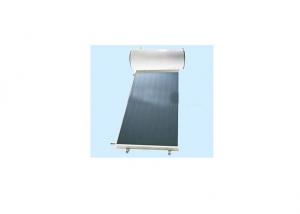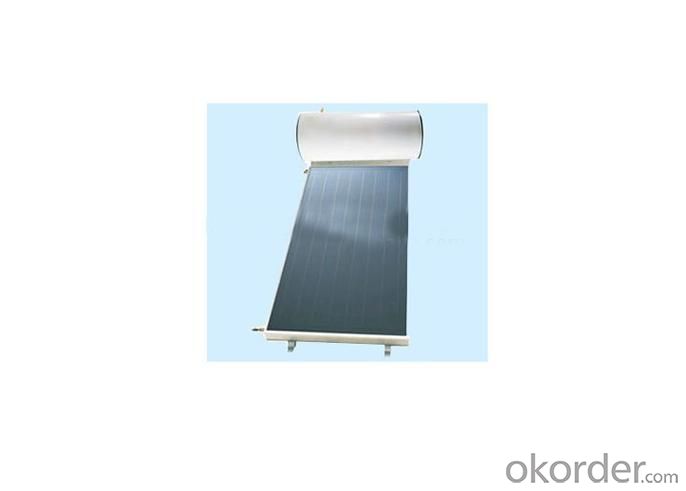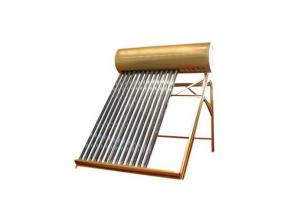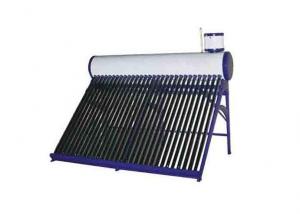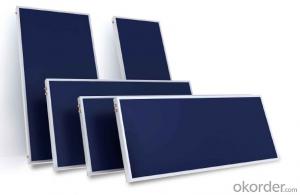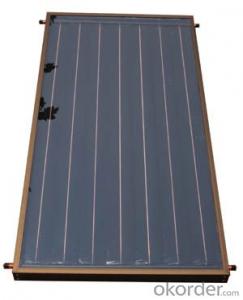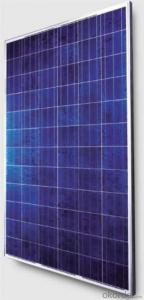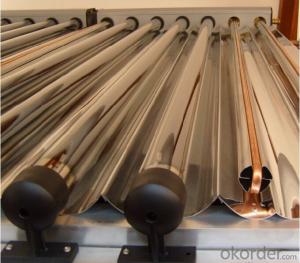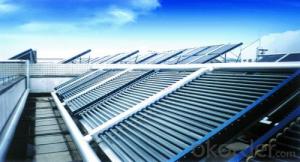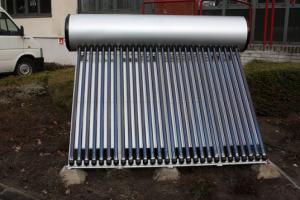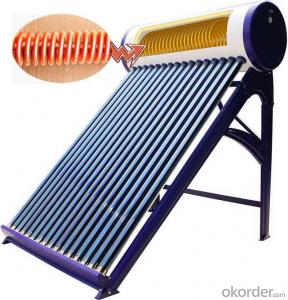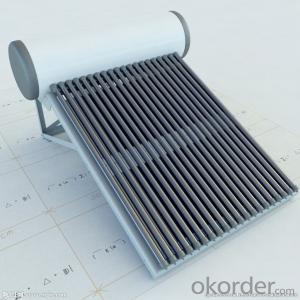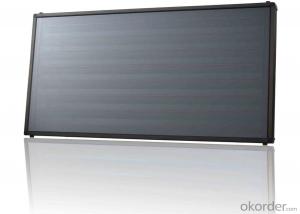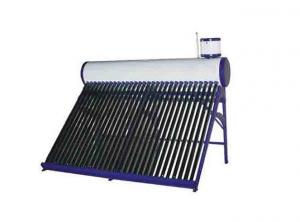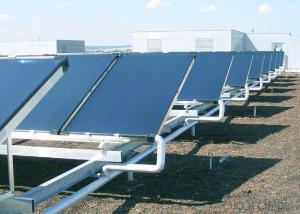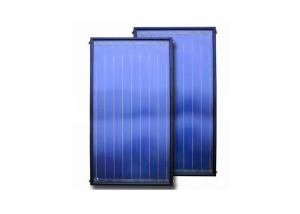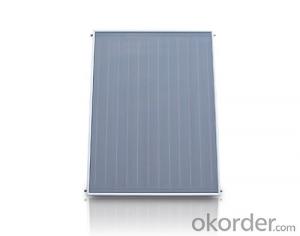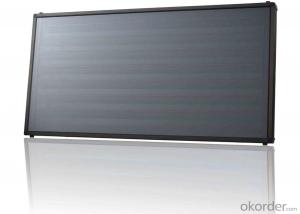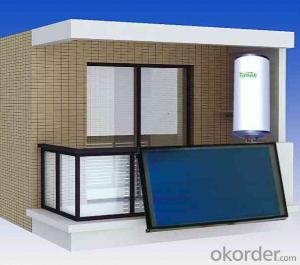Residential Solar Collectors - High Quality Solar Water Heater
- Loading Port:
- China Main Port
- Payment Terms:
- TT or LC
- Min Order Qty:
- 5 Pieces pc
- Supply Capability:
- 20,000 Pieces per Month pc/month
OKorder Service Pledge
OKorder Financial Service
You Might Also Like
Detailed Product Description of High Qualiaty Solar Water Heater
1)High efficiency
2)High quality
3)Long life span
4)Beautiful design
Tube:
1) Material of cover tube: Borosilicate glass
2) Diameter of cover tube:58mm
Thinckness of cover tube:1.6mm
3) Diameter of inner tube:47mm
Thickness of inner tube:1.6mm
4)Transmission of the cover tube:>94%
5)Selective coating:ALN/ALN-SS/CU
6)Emissivity coeffcient:<7%
7)Distance from tube to tube:7.8mm
8)Material of the absorber pipe:copper
9)Dimension of heat pipe: condensor, Φ14mm*1mm, body, Φ 8mm*0.8mm
Manifold:
1)Material of the header pipe:copper
2)Dimension of the header pipe:Φ35mm* 1mm
3)Inner flowing pipe of manifold :Φ22mm*1mm
4)Material of manifold: Aluminum alloy
5)Thickness of manifold:2mm
Insulation:
1)Material of insulation: Polyurethane or rockwoode
2)Thickness of the insulation: 35mm or 45mm
3)Sealing material:rubber
Bracket
1)Material:aluminum alloy
2)Thinckness:1.8mm
- Q: How do solar collectors contribute to reducing water consumption?
- Water consumption can be reduced through the use of solar collectors, which offer an alternative and more sustainable approach to heating water. Unlike traditional methods that rely on fossil fuels or electricity, solar collectors use the sun's energy, eliminating the need for water-intensive procedures like extraction, processing, and generation. The functioning of solar collectors involves absorbing sunlight, converting it into heat, and then transferring that heat to the water in the system. This process doesn't require any additional water, making it a water-efficient choice for water heating. By employing solar collectors, water consumption is minimized as there is no need for water in electricity generation or fossil fuel extraction and processing. Furthermore, solar collectors can contribute to reduced water consumption through the use of a closed-loop system. In this system, the water in the collector circulates through pipes, getting heated by the sun, and then returning to a storage tank. This allows for the reuse of the same water, further reducing the necessity for fresh water. Additionally, the closed-loop system helps minimize the risk of contamination since the water remains contained within the system and is not exposed to external pollutants. In conclusion, solar collectors play a vital role in reducing water consumption by offering an environmentally friendly and sustainable approach to heating water. By relying on the sun's energy, they eliminate the water-intensive processes associated with traditional water heating systems, ultimately aiding in the conservation of water resources.
- Q: Condensation type solar collectors and non-concentrating heaters
- according to whether to track the sun, according to whether there is a vacuum space; According to the collector type of heat transfer, the solar collectors can be divided into two types. Liquid collector air collector according to enter the mouth of the solar radiation is to change the direction of classification According to the solar radiation into the lighting port to change direction,
- Q: How do solar collectors perform in areas with high levels of airborne debris?
- Solar collectors can still perform effectively in areas with high levels of airborne debris, but their efficiency may be slightly reduced. Airborne debris, such as dust, pollen, and leaves, can accumulate on the surface of the solar collectors and reduce the amount of sunlight that reaches the absorber plate. This can result in a decrease in the amount of heat that is generated by the collectors. However, modern solar collectors are designed to be efficient and self-cleaning to some extent. Many collectors have a smooth surface and are tilted at an angle, which helps prevent the accumulation of debris. Additionally, some collectors are equipped with automatic cleaning mechanisms, such as brushes or water sprays, which remove the debris periodically. Regular maintenance and cleaning of the solar collectors is essential in areas with high levels of airborne debris. This can involve removing any accumulated debris manually or using water or air pressure to clean the surface. By keeping the collectors clean, their performance can be maintained at optimal levels. It is worth noting that the impact of airborne debris on solar collector performance varies depending on the type and thickness of debris, as well as the specific design and technology of the collectors. In some cases, the reduction in efficiency may be negligible, while in others, it could be more significant. To determine the exact impact, it is recommended to consult with a solar energy professional who can provide a more accurate assessment based on the specific conditions and characteristics of the area.
- Q: Can solar collectors be used in cold climates?
- Yes, solar collectors can be used in cold climates. While their efficiency may be slightly reduced in colder temperatures, they can still effectively harness solar energy even in cold weather. Additionally, advancements in technology have enabled the development of solar collectors that are specifically designed to maximize performance and heat absorption in cold climates.
- Q: Can solar collectors be used for drying construction equipment?
- Yes, solar collectors can be used for drying construction equipment. Solar collectors, also known as solar thermal collectors, are devices that absorb sunlight and convert it into heat. This heat can be used for various purposes, including drying equipment. By using solar collectors to generate heat, construction equipment can be effectively dried without the need for traditional fuel-based methods. The drying process involves directing the heat generated by solar collectors towards the equipment that needs to be dried. This can be done by placing the equipment in direct contact with the solar collectors or by using a system of pipes to transfer the heat to the equipment. The heat from the solar collectors can effectively evaporate any moisture present on the equipment, thus drying it thoroughly. Using solar collectors for drying construction equipment has several advantages. Firstly, it is an environmentally friendly option as it relies on renewable energy from the sun. This reduces reliance on fossil fuels and contributes to reducing carbon emissions. Additionally, solar collectors require minimal maintenance and have a long lifespan, making them a cost-effective option in the long run. However, it is important to note that the effectiveness of solar collectors for drying construction equipment can be influenced by factors such as weather conditions, the size and design of the equipment, and the amount of moisture present. In some cases, supplemental heating methods may be necessary to ensure efficient drying. Overall, solar collectors can be a viable and sustainable solution for drying construction equipment, providing an energy-efficient alternative to traditional drying methods.
- Q: Can solar collectors be used for heating industrial facilities?
- Yes, solar collectors can be used for heating industrial facilities. Solar thermal systems can effectively capture and convert sunlight into heat energy, which can be used for various heating applications in industrial settings such as space heating, water heating, and process heating. The installation of solar collectors can help reduce the reliance on fossil fuels, lower energy costs, and contribute to a more sustainable and environmentally friendly operation of industrial facilities.
- Q: How do flat plate solar collectors work?
- Flat plate solar collectors work by capturing the sun's heat energy through a dark-colored plate, typically made of metal, which absorbs the sunlight. This absorbed heat is then transferred to fluid circulating through pipes or channels within the collector. The fluid, usually water or an antifreeze solution, then carries the heat to a storage tank or directly to a target application like space heating or hot water. The collector is designed with a transparent cover, usually glass or plastic, which allows sunlight to pass through but traps the heat inside, creating a greenhouse effect. This process allows flat plate solar collectors to efficiently convert solar energy into usable heat for various residential, commercial, and industrial purposes.
- Q: Do solar collectors require backup heating systems?
- Yes, solar collectors typically require backup heating systems for times when there is insufficient sunlight or during peak energy demand. Backup heating systems ensure a continuous supply of hot water or heat, especially during cloudy days or nighttime.
- Q: Can solar collectors be used in airplanes?
- Yes, solar collectors can be used in airplanes. In fact, some aircraft have already adopted solar technology to power auxiliary systems or assist in propulsion. Solar panels installed on the surface of an aircraft can harness sunlight to generate electricity, reducing reliance on traditional fuel sources and enhancing energy efficiency. However, due to the limitations of current solar technology, it is not yet viable to solely rely on solar collectors for all aircraft power needs.
- Q: Can solar collectors be used in areas with limited access to government assistance?
- Yes, solar collectors can be used in areas with limited access to government assistance. Solar energy is a decentralized and renewable resource, and the installation of solar collectors requires minimal government involvement. With the decreasing costs of solar panels and the availability of financing options, individuals and communities can invest in solar power systems independently, even in areas without significant government assistance. This allows for greater energy independence and sustainability, benefiting communities with limited access to government support.
1. Manufacturer Overview
| Location | Zhejiang,China |
| Year Established | 2005 |
| Annual Output Value | US$2.5 Million - US$5 Million |
| Main Markets | North America South America Eastern Europe Southeast Asia Africa Oceania Mid East Eastern Asia Western Europe Central America Northern Europe Southern Europe Domestic Market |
| Company Certifications | ISO9001:2008;ISO14001:2004 |
2. Manufacturer Certificates
| a) Certification Name | |
| Range | |
| Reference | |
| Validity Period |
3. Manufacturer Capability
| a) Trade Capacity | |
| Nearest Port | Shanghai,Hangzhou |
| Export Percentage | 41% - 50% |
| No.of Employees in Trade Department | 6-10 People |
| Language Spoken: | English, Chinese |
| b) Factory Information | |
| Factory Size: | 5,000-10,000 square meters |
| No. of Production Lines | 5 |
| Contract Manufacturing | OEM Service Offered Design Service Offered Buyer Label Offered |
| Product Price Range | Average |
Send your message to us
Residential Solar Collectors - High Quality Solar Water Heater
- Loading Port:
- China Main Port
- Payment Terms:
- TT or LC
- Min Order Qty:
- 5 Pieces pc
- Supply Capability:
- 20,000 Pieces per Month pc/month
OKorder Service Pledge
OKorder Financial Service
Similar products
Hot products
Hot Searches
Related keywords
